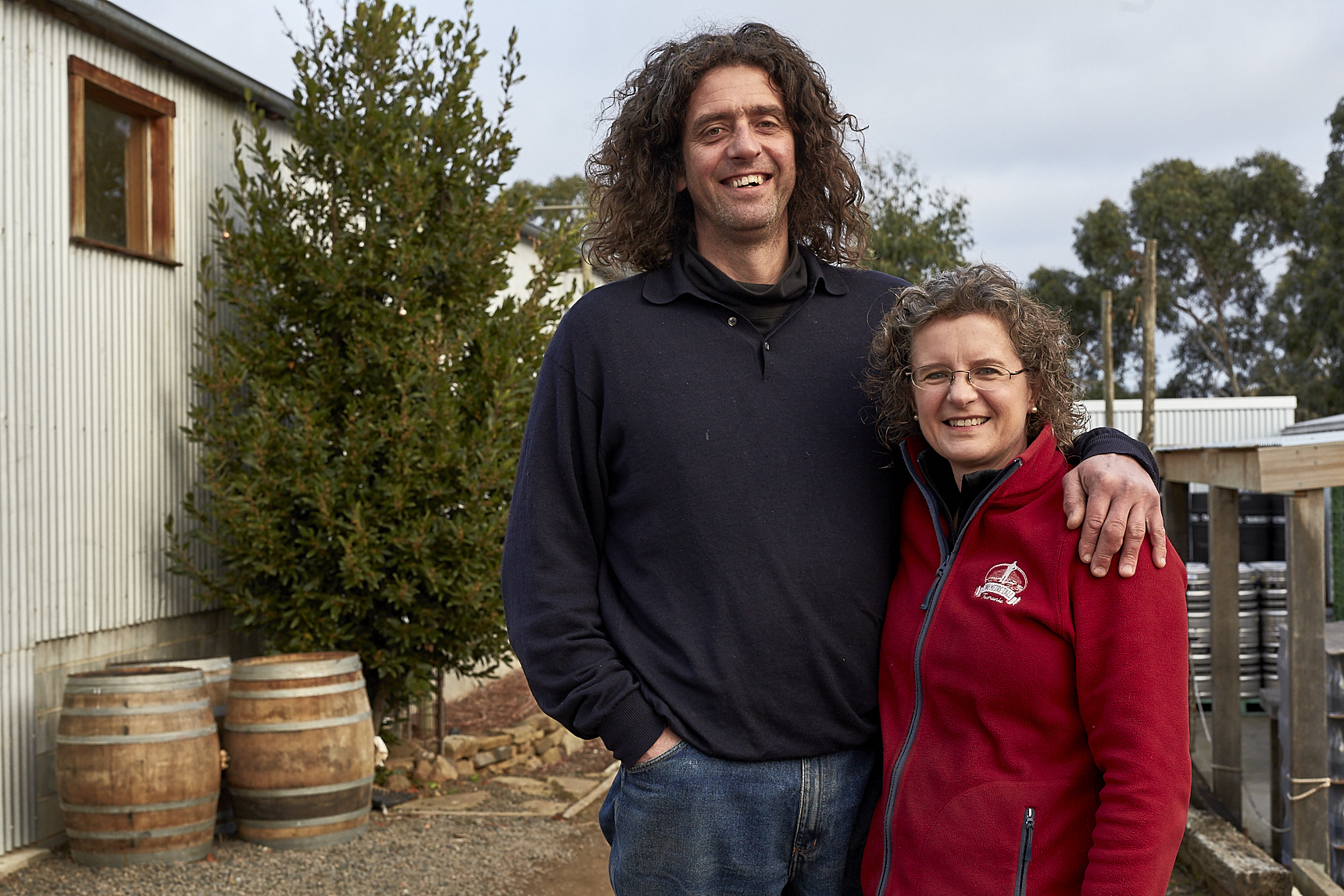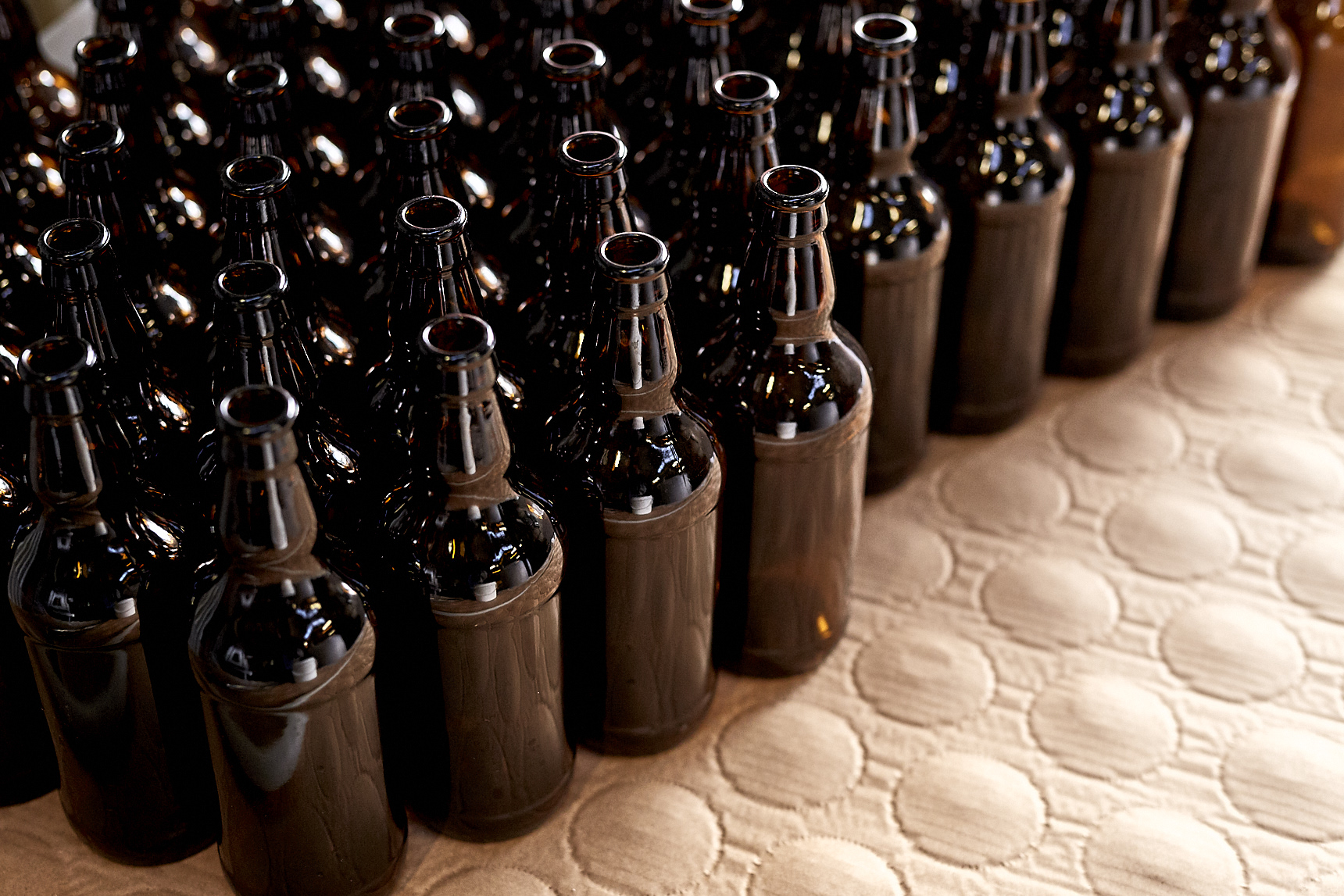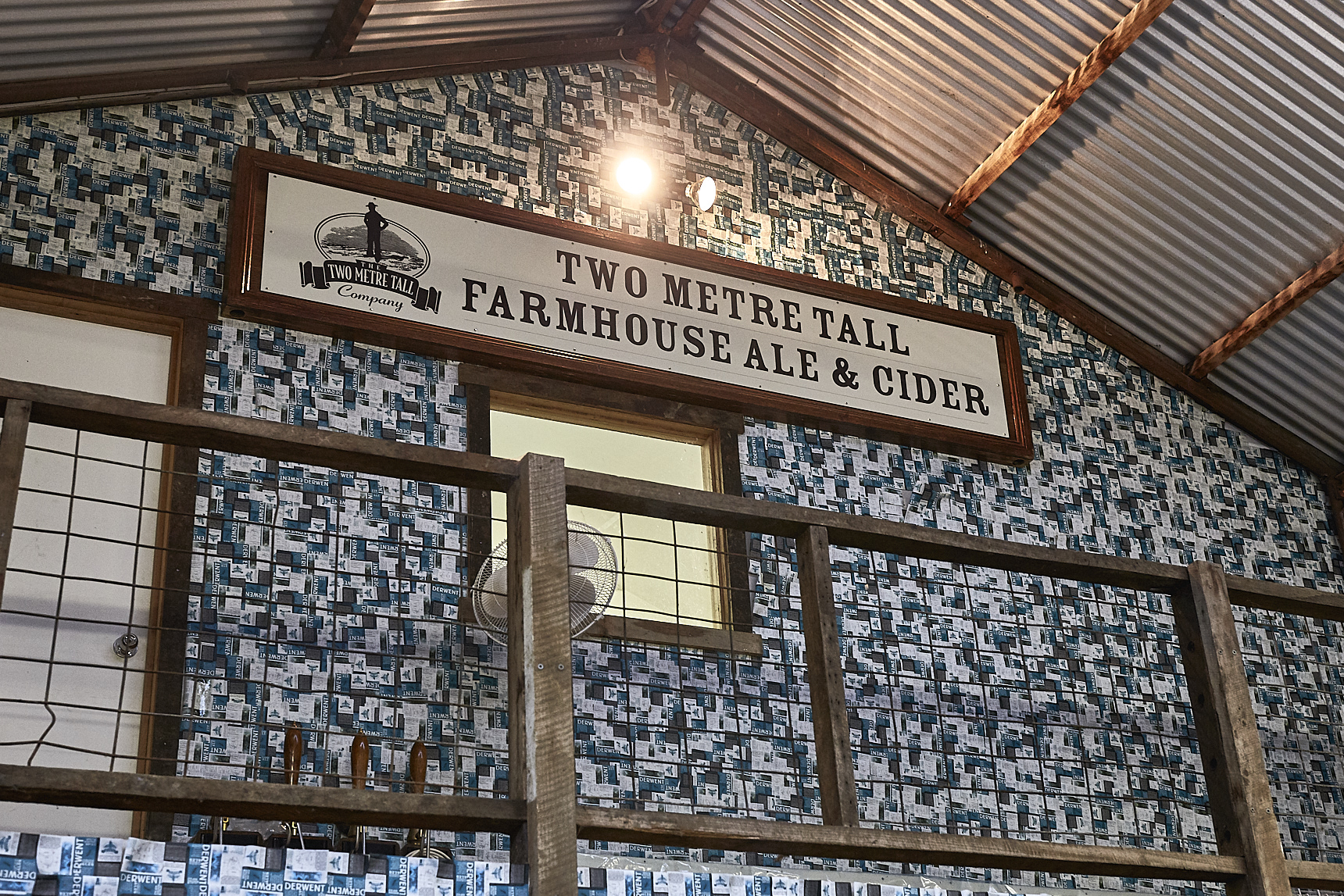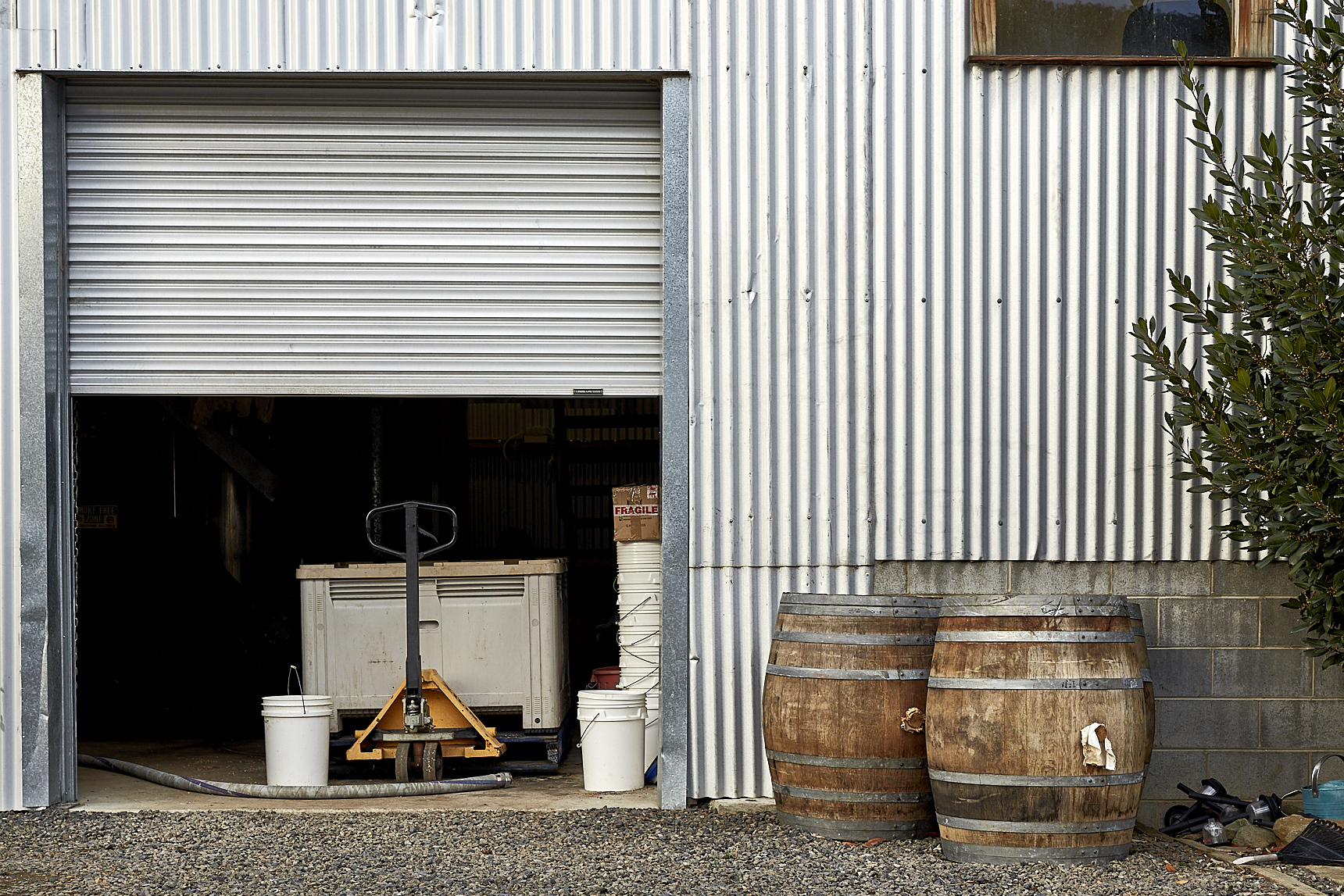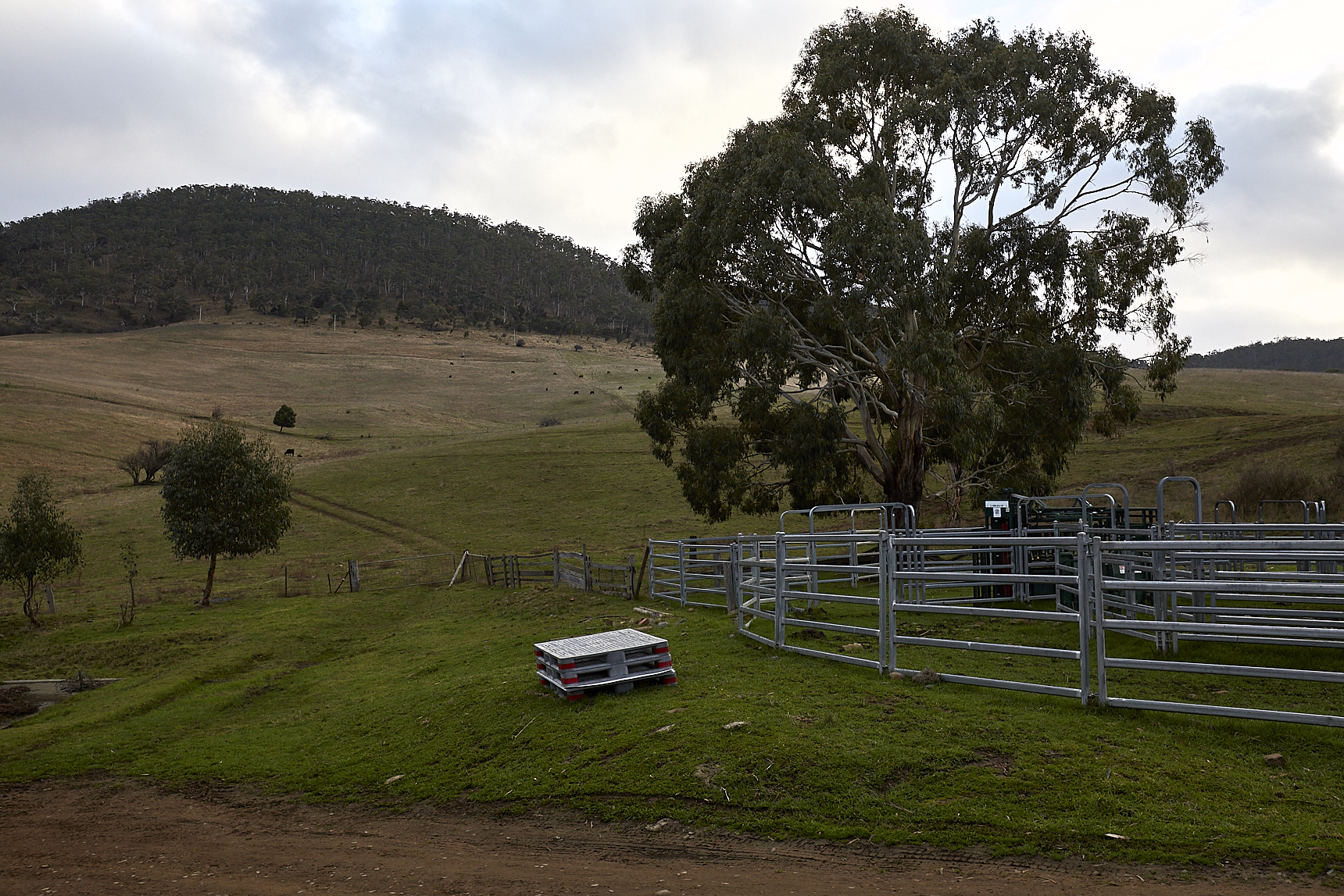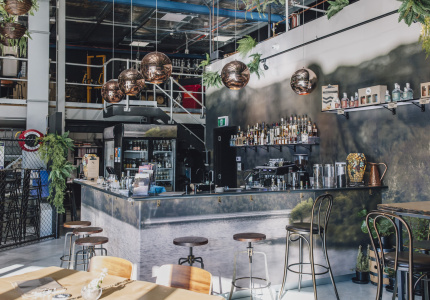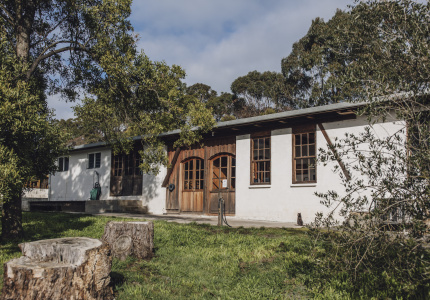"Terroir” isn’t usually a word associated with beer. With imported malt and pelletised hops, the sole local ingredient in even the craftiest brew is often just water.
That isn’t the case with Two Metre Tall. When Ashley and Jane Huntington bought their 580-hectare plot on the banks of the Derwent River in Hayes, Tasmania, the idea was to plant a vineyard. Ashley had spent a decade as the director and senior winemaker at Hardy’s French operation at the Domaine de la Baume in Languedoc, France. But by the early 2000s things changed for the couple. “We started to think corporate winemaking wasn’t something we were so keen on anymore,” says Jane. “We wanted to branch out on our own. We spent four or five months in Tasmania, travelled around and just fell in love with it.”
But grapes don’t grow very quickly. So the Huntingtons needed something for the interim, a way to keep their new farm gate open. It soon dawned on the pair they were perfectly placed to brew beer.
“You land in the Derwent Valley and very quickly become aware of its 200 years of hop-growing history,” says Jane looking across the ranges. “Bushy Park Hop Products Australia is just over there producing, which was exciting.” So the couple planted barley – grain will grow in a season, whereas grapes can take up to three years – and began making beer. They never did plant those vineyards.
It wasn’t just barley, local hops and the quality of local water that caught the Huntingtons’ eye. It was also the fruit and vegetables grown by neighbouring farmers. “We’re on a farm and we grow some of our ingredients – but not all,” says Jane. “So we’re very focused and passionate about sourcing Tasmanian ingredients. You find yourself looking at beautiful Morello cherries, Prune D’Agen plums, beautiful pumpkins by a grower down the road. You just think to yourself; well we’ve got these cherries. I’m going to put them in a beer and see what it tastes like.”
In keeping with their approach to local provenance, the Huntingtons sought to hero the ingredients they use – not just approximate their taste. Take their Two Metre Tall cherry ale, where they add whole fruits to ale that’s been maturing in oak barrels for four years, then let it ferment for 12 months.
“You’ve got this aged soured-ale base and the fruit goes into the barrel as whole fruit,” says Jane. “So you’ve got the skin of the cherry and the cherry stones. Then it’s about 10-to-12-months barrel fermented before it’s racked and bottle-fermented as well. It’s a really involved, lengthy process.”
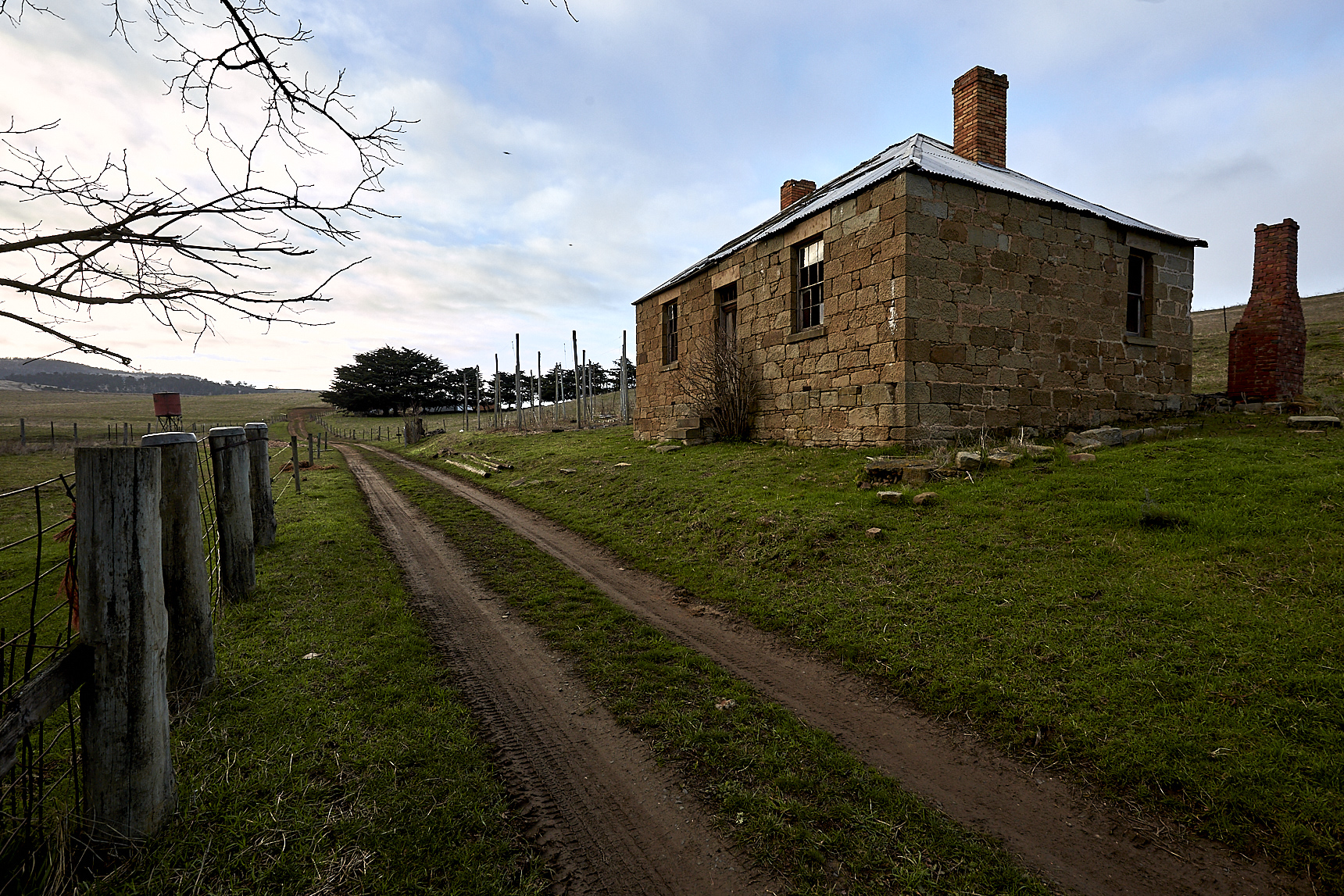
Perhaps the most important ingredient taken from the local area isn’t grown by farmers, at least not in the traditional sense. Rather, it’s the natural yeasts that live on grains and travel on the wind to land and grow on the delicate hops flowers. “The sort of brewing that we’re doing focuses on those indigenous yeasts,” says Jane. “Microorganisms like lactobacillus, brettanomyces – it’s been a huge learning curve for us. But our beer becomes an expression of this place, in the sense that all of those lovely microorganisms are here naturally. We’re using raw grains as well, so they’re going to have lactobacillus from where they were grown.”
"...our beer becomes an expression of this place, in the sense that all of those lovely microorganisms are here naturally."
Once made, Two Metre Tall is left to ferment naturally in repurposed wine barrels. This process – and time – is crucial to the final product.
“The ageing process is a fantastic journey into the complexity of flavour,” says Jane. “All of those barrels and what they can do to a beverage – it’s not just about putting something in oak for three or four months and expecting any benefit from it. It’s about watching them over time.”

The approach means every brew is a work of controlled experimentation. Rather than inoculating for the “right” type of yeast to deliver certain characteristics reliably, Ashley works with what transpires. “We’ve had brews where you taste something out of a barrel, and you think, ‘oh no, what a disaster’, ” says Jane. “But we’ve learned over time to step away, leave it, and come back in a few more months. It’s just outstanding what these microorganisms will do to a beverage.”
This natural ferment method is exciting to a particular breed of curious beer drinker. But, like the ongoing battle over natural wines, there is still some controversy over Two Metre’s methods.
“Initially our beers were heavily criticised within the industry for being ‘infected’,” laughs Jane. “There’s still criticism of natural wine in the wine world; they say it’s just bad wine with good marketing. But does that ‘fault’ taste good?”
Two Metre Tall’s answer is to taste what’s in front of you. “Put it in a wine glass, have a look at the colour of it, smell those aromas and taste it,” says Jane. “With beer, you’re not obliged to put ingredients on the label, but we want to be extremely transparent about how we brew it. We tell people this is going to have souring acidity; this is going to have natural wild yeast characters. We’re not talking about slabs of beer you drink at a barbeque. We’re talking about putting something in a glass and giving it time.”
For the truest expression of Two Metre Tall’s terroir, however, there’s only one place to do it. Drive 45 minutes northwest of Hobart along the National Highway until you reach the brewery in Hayes. Claim one of the picnic tables not far from the banks of the Derwent River, overlooking the herd of Black Angus roving the hillside and pigs behind the brewery. “Bring a picnic here and barbeque if you want to,” says Jane. “And enjoy a pint of hand-pumped ale.”
This article is produced by Broadsheet in partnership with Tasmania – Go Behind the Scenery. Create your own Tassie story here.
with Tourism Tasmania. Learn more about partner content on Broadsheet.

